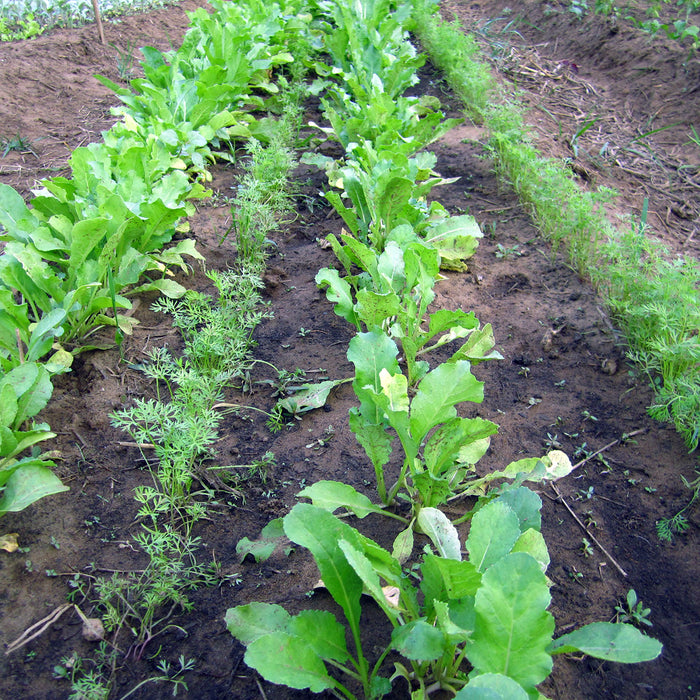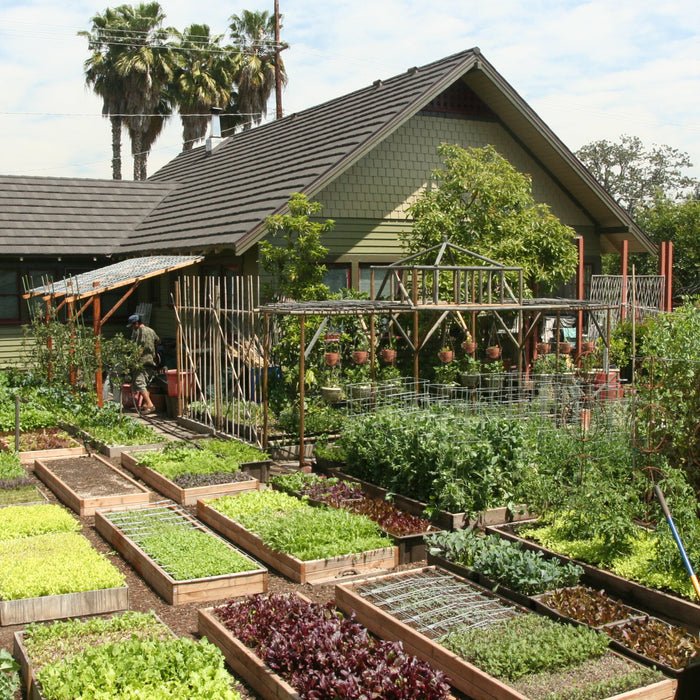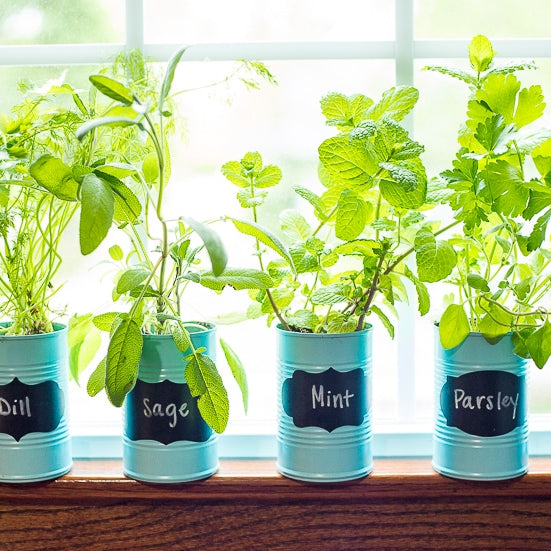
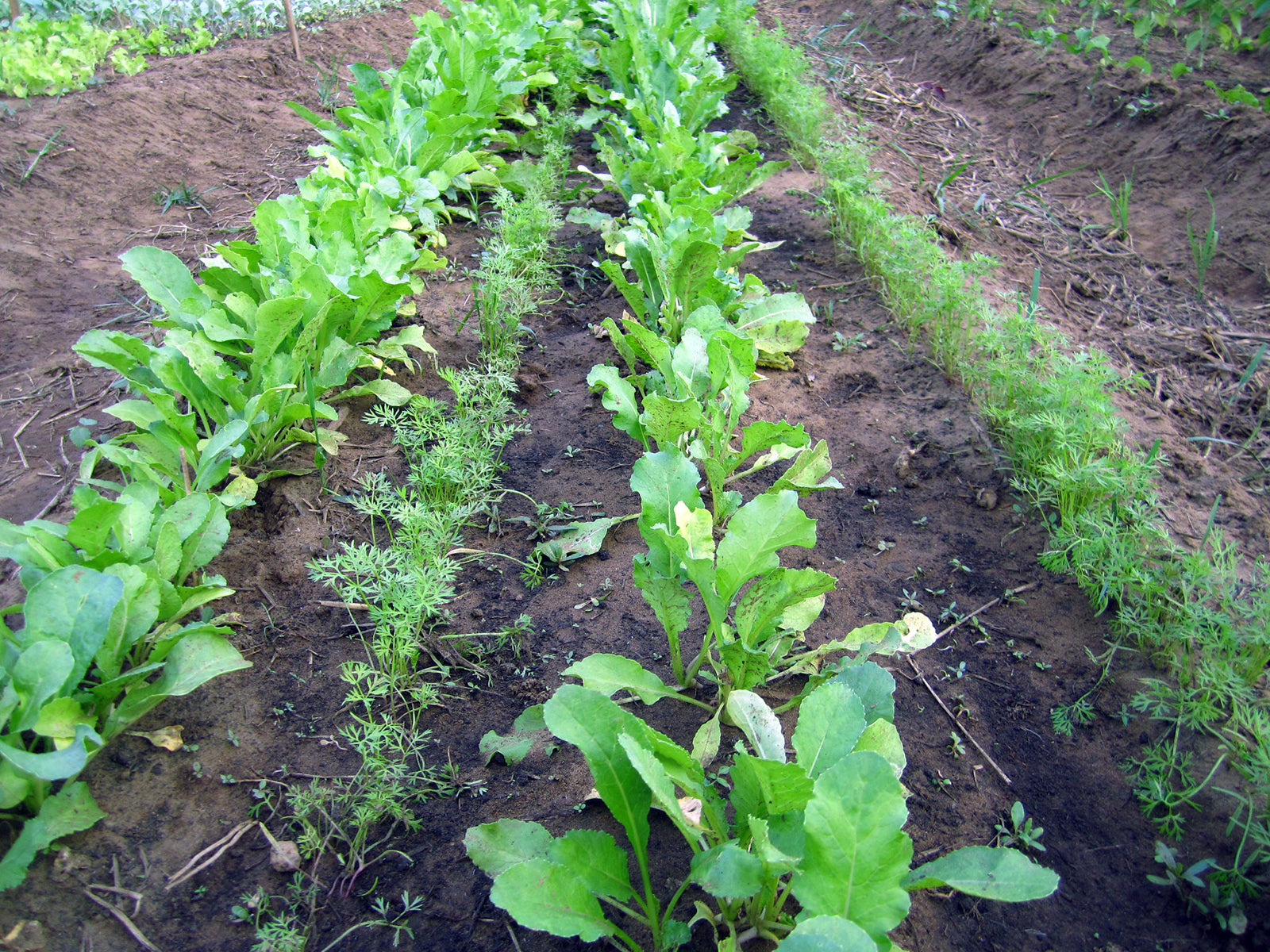
Intercropping: A Guide to Improving Crop Yields, Soil Health, and Resilience
Intercropping is an age-old technique in agriculture that has gained renewed interest among sustainable agriculture proponents. By planting two or more crops in the same space, farmers can increase crop yields, improve soil health, and reduce pest and disease problems. In this guide, we'll explore the benefits of intercropping, different types of intercropping, and how to implement this practice on your own homestead.
The Benefits of Intercropping
One of the primary benefits of intercropping is its ability to increase crop productivity. By growing different crops with different growth habits and rooting depths, intercropping can reduce competition for resources such as water and nutrients, which can ultimately improve overall crop yield. This is particularly important for small-scale farmers who have limited land and resources.
Intercropping can also improve soil health. Different crops have different root systems that can help to break up soil compaction, increase soil organic matter, and improve soil structure. This can lead to increased water retention and better nutrient availability for plants.
Another benefit of intercropping is its ability to reduce pest and disease problems. By creating a more diverse environment with different crops, farmers can make it less conducive to the spread of pests and diseases. Certain crops may also have natural repellent properties that can help to keep pests at bay. For example, planting marigolds alongside vegetables can help to repel nematodes that damage plant roots.
Types of Intercropping
There are different types of intercropping depending on the crops being grown and the farming system being used. One common form of intercropping is called alley cropping, where crops are grown in between rows of trees or shrubs. This can help to improve soil quality and create a more diverse ecosystem.
Companion planting is another form of intercropping where two or more crops are grown together because they complement each other in some way. For example, planting beans alongside corn can help to fix nitrogen in the soil, which can benefit both crops. Companion planting can also help to attract beneficial insects and pollinators, which can help to increase crop yields.
Implementing Intercropping on Your Homestead
Implementing intercropping on your homestead requires careful planning and management. You need to consider the growth habits and nutrient requirements of each crop when deciding what to plant together. You also need to ensure that the crops are spaced correctly and that they don't compete too much for resources.
To get started, you can begin by selecting crops that complement each other and have similar nutrient requirements. For example, planting nitrogen-fixing legumes such as peas or beans alongside heavy feeders like tomatoes or squash can help to improve soil fertility.
Here is a list of popular garden crops with their anecdotal recommended companion plants:
It's important to rotate crops annually and avoid planting the same crops in the same space year after year. This can help to reduce pest and disease problems and improve soil health. You can also experiment with different intercropping methods to see what works best for your homestead.

Best Companion Plants
Some vegetable combinations are superstars in bringing out the best in one another or in preventing common pest and disease problems. Among these outstanding combinations:
- Corn, pole beans, and squash: Known as the "three sisters," this combination was first developed by American Indian people centuries ago. Corn, with its sturdy stems, provides upright support for climbing beans. For their part, the pole beans fix nitrogen in the soil, providing essential nutrients for all three sisters. And the large leaves of the ground-dwelling squash shade the soil, retain moisture, and block out weeds.
- Cucumbers, sunflowers, and pole beans: The principle here is the same as for the three sisters: the sunflower supports climbing pole beans, while cucumber vines shield the ground.
- Basil and tomatoes: These can be considered "best friends" in the garden. Basil repels thrips and disrupts the habits of the moths that cause tomato hornworms.
- Sage, with carrots or cabbage. Sage is a proven repellant for carrot flies and cabbage moths.
- Parsley and tomatoes: Parsley attracts beneficial insects that help keep control of damaging insects that prey on tomato plants.
In addition, some plants benefit almost any plant they are paired with—either by repelling damaging insects or attracting beneficial insects that prey on the bad guys. These champions include:
- Nasturtiums: This plant lures hungry caterpillars away from brassicas, including cabbage, broccoli, and kale,
- Mint: This plant's scent strongly repels aphids, ants, and flea beetles.
- Garlic: This onion relative has a strong scent that is repugnant to aphids, and all repels a variety of mites, moths, and beetles.
- Dill: This plant is known to attract ladybugs, which are voracious eaters of damaging aphids and spider mites.
Companion Planting with Herbs
Not every garden is large enough to grow various crops for companion planting. But that does not mean that you cannot take advantage of herbs' numerous benefits, like trapping and repelling pests and attracting pollinators and other beneficial insects to increase the biodiversity in your backyard.
From aphids to tomato hornworms, these are just a few of the culinary herbs that can take care of different pests in your garden or attract beneficial insects:
- Basil
- Borage
- Chives
- Cilantro
- Lavender
- Mint
- Oregano
- Rosemary
- Sage
- Thyme
Allow some herbs to bloom because that's when they become a natural magnet for beneficial insects.
Flowers as Companion Plants
Planting flowers in your vegetable garden does more than create beauty and provide cut flowers. Annuals such as nasturtiums, sunflowers, marigolds, and zinnias, and perennials such as lavender repel pests and attract beneficial insects.
Flowers as a Beacon for Pollinators
Bees and other pollinators help spread pollen, encouraging vegetable plants to grow, reproduce, and produce fruits and vegetables. Pollinators favor zinnias, sweet alyssum, daisies, sunflowers, and cosmos.
Flowers as Deterrent for Problem Pests
Certain flowers, like petunias, repel squash bugs and tomato hornworms; petunias are a great companion for beans, tomatoes, and corn. Meanwhile, marigolds repel cabbage worms. Cabbage worms mainly target cabbage, mustard greens, kale, broccoli, Brussels sprouts, and related vegetables. Ornamental alliums (including edible ones, like onions, scallions, and chives) also deter deer, rabbits, aphids, cabbage looper, carrot flies, and potato beetles.
The Dervaes Family and Intercropping
The Dervaes family of Pasadena, California, is a prime example of a family who has successfully implemented intercropping on their urban homestead. They have been growing their own food for over 30 years and have developed a unique farming system that includes intercropping, permaculture, and aquaponics.
Their urban homestead is only 1/10 of an acre, yet they are able to grow 6,000 pounds of food each year. They use intercropping to maximize their space and grow a variety of crops including vegetables, fruits, and herbs.
Another popular form of intercropping is called polyculture, where multiple crops are grown together in a single plot of land. Polyculture can help to create a diverse and resilient ecosystem that can better withstand environmental stresses like drought, floods, and extreme temperatures. By combining crops with different growth habits and nutrient requirements, polyculture can also help to reduce competition for resources and improve overall crop yield.
The Dervaes family of Pasadena, California
The Dervaes family of Pasadena, California is a great example of how intercropping can be used on a small-scale homestead to increase food production and create a more sustainable food system. The family grows over 400 species of plants on their 1/10 acre urban homestead, using a combination of intercropping, container gardening, and vertical gardening techniques.
According to the family, intercropping has been key to their success in growing a wide variety of crops in a small space. By growing crops with different growth habits and nutrient requirements, they are able to maximize their use of space and resources, while also improving soil health and reducing pest and disease problems.
One example of how the Dervaes family uses intercropping is by planting beans alongside corn. The beans help to fix nitrogen in the soil, which can benefit both crops, while also providing a natural trellis for the corn to grow on. This not only saves space but also reduces the need for additional support structures for the corn.
Another example of intercropping used by the Dervaes family is companion planting. They plant marigolds alongside their vegetables to help repel nematodes, and they also plant herbs like basil and thyme alongside their vegetables to attract beneficial insects like pollinators and predators of pests.
One of the main advantages of intercropping is the ability to grow different crops together in the same space, providing mutually beneficial growing conditions.
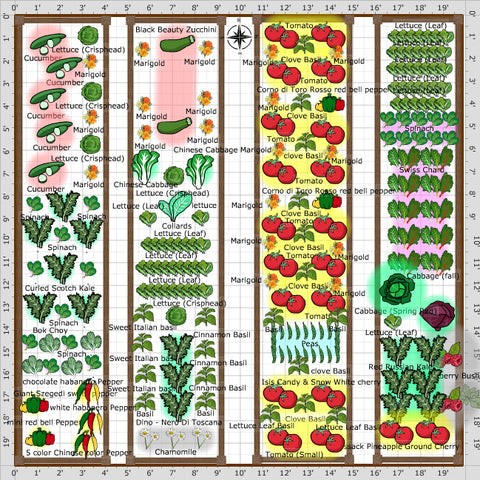
Examples of vegetables that can be intercropped:
- Tomatoes and Basil
Tomatoes and basil make a great companion planting combination as they are both from the same plant family, Solanaceae. Basil is known to repel pests such as whiteflies and mosquitoes, which can help protect the tomato plants. Additionally, basil can help improve the flavor of tomatoes, making it an ideal companion for the popular vegetable.
- Cucumbers and Radishes
Cucumbers and radishes make a great intercropping combination as the radishes grow quickly and can be harvested before the cucumber vines take over. Radishes help to loosen the soil around the cucumber plants, making it easier for them to take root and thrive. Cucumber vines also provide shade for the radish plants, helping to protect them from the sun.
- Carrots and Onions
Carrots and onions are both root vegetables that grow well together. Onions help to repel pests such as carrot flies and other root maggots that can damage the carrot roots. Additionally, the strong aroma of onions can help deter larger pests like deer and rabbits from feeding on the plants.
- Squash and Beans
Squash and beans make a great intercropping combination as the beans fix nitrogen in the soil, which can benefit the squash plants. Squash vines also provide a natural trellis for the bean plants to climb on, making it easier for them to grow and thrive. Additionally, the dense foliage of the squash plants helps to shade the soil, reducing evaporation and keeping the soil moist.
- Strawberries and Lettuce
Strawberries and lettuce make a great combination for intercropping as they both prefer partial shade and cool temperatures. Lettuce can be grown between the rows of strawberry plants, providing a natural ground cover that helps to retain moisture in the soil. Additionally, the shallow roots of lettuce do not compete with the deeper roots of strawberry plants for water and nutrients.
- Peppers and Spinach
Peppers and spinach make a great intercropping combination as the spinach provides a natural ground cover that helps to retain moisture in the soil and keep the pepper roots cool. Additionally, spinach is a cool-season crop that can be grown in the early spring or late fall when peppers are not actively growing.
- Broccoli and Beets
Broccoli and beets make a great combination for intercropping as the beets can be planted in the space between the rows of broccoli plants. Beets help to loosen the soil around the broccoli plants, making it easier for them to take root and thrive. Additionally, the dense foliage of the broccoli plants helps to shade the soil, reducing evaporation and keeping the soil moist.

If you are interested in implementing intercropping on your own homestead or small farm, there are a few things to keep in mind. First, it is important to choose crops that complement each other in terms of their growth habits and nutrient requirements. You should also consider the spacing and timing of planting, as well as the potential for competition for resources.
There are many resources available online that can help you learn more about intercropping and how to implement it on your own farm or homestead. The USDA's Sustainable Agriculture Research and Education program is a great place to start, with a variety of publications and webinars on intercropping and other sustainable farming techniques.
In addition, there are many books and blogs available on the topic of intercropping and sustainable agriculture.
Some popular titles include
- "The Resilient Farm and Homestead" by Ben Falk
- "The Ecology of Intercropping" by M.L. Altieri and P.A. Merrick,
- "The One-Straw Revolution: An Introduction to Natural Farming" by Masanobu Fukuoka.
In conclusion, intercropping is a valuable technique in sustainable agriculture that can help to increase crop yields, improve soil health, and reduce pest and disease problems. Whether you are a small-scale homesteader or a larger farmer, intercropping can be a valuable tool for creating a more sustainable and resilient food system. By choosing complementary crops and carefully planning and managing your intercropping system, you can maximize the productivity of your land and resources while also creating a more diverse and resilient ecosystem.
Sources:
-
"The Benefits of Intercropping in Sustainable Agriculture" by E. K. Oppong, S. S. Agodzo, and S. K. Oppong. Journal of Sustainable Development. Vol. 8, No. 6, 2015.
-
"Intercropping: An Overview" by P. C. Deka and B. K. Bora. International Journal of Agriculture, Environment and Biotechnology. Vol. 8, No. 4, 2015.
-
"Companion Planting in the Vegetable Garden" by Charlie Nardozzi. National Gardening Association.
-
"Alley Cropping: Agroforestry Systems for the Central Corn Belt" by R. K. Crookston, C. F. Norris, and J. H. Rodriquez-Kabana. USDA National Agroforestry Center.
-
"Intercropping and Its Importance in Sustainable Agriculture" by J. N. Akwasi and O. A. Opoku. Journal of Sustainable Development Studies. Vol. 6, No. 1, 2015.
-
"Intercropping in Organic Farming Systems" by R. K. Ghosh and P. C. Sarkar. International Journal of Plant and Soil Science. Vol. 18, No. 1, 2017.
Recommended Posts
- Best Places to Move to be Self-Sufficient and Off the Grid
- Homesteading for Beginners: How to Start Living Off the Grid and Making Money
- The Ultimate Guide to Urban Farming: Everything You Need to Know
- The Ultimate Guide to Homesteading and Raising Chickens: Tips, Tricks, and Tools
- Meet the Family Growing 6,000 Pounds of Food on Just 1/10 Acre: A Lesson in Sustainable Farming


